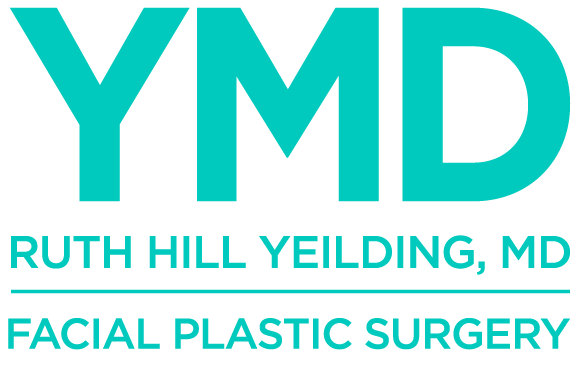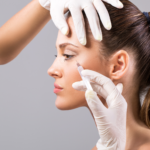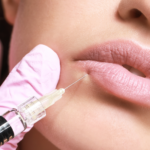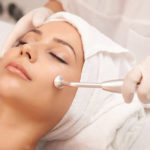Blepharoplasty is a surgery that improves the appearance of your eyelids. It may require removal of skin, fat, and muscle from around the eyelids. You may have heard this surgery called an “eyelid lift”, but that is actually an inaccurate name because the eyelid is not truly “lifted” during the procedure.
How Does Blepharoplasty Work?
There are two ways eyelid surgery could be performed. Upper blepharoplasty surgery calls for incisions to be made in order for skin and fat to be removed. The skin is then reconnected with a thin stitch so an eyelid crease could be created.
Surgery on the lower eyelid involves incisions below the lashline or inside the eyelid. This strategy is known as a transconjunctival approach. The benefit is that the eyelid can be accessed without visible incisions being made. This is a preferred method for patients who are looking to have fat removed or added. One added strategy to this surgery is to have laser resurfacing performed on the skin of the eyelid. This would help reduce the visibility of wrinkles or lines.
Why Would it Be Performed?
The upper eyelid procedure would be done to remove excess skin and fat, both of which can create a heavy looking eyelid. It will also help improve the patient’s field of vision.
Patients having lower eyelid surgery performed would need it to improve the eyelid’s contour. Tightening of this area can correct sagging of the skin.
There are patients that have double eyelid surgery. This is known as Asian Eyelid Surgery. This is performed to create or enhance the upper eyelid crease. Typically, Asian people have this operation to give their eyes a more Westernized appearance.
Are There Risks?
As with any operation, while the benefits are worthwhile to the patients, there are potential complications and risks. They include the following:
- Bleeding
- Infection
- Scarring
- Dry Eyes
- Inability to Close Eyes
- Double Vision
- Abnormal Eyelid Position
- Loss of Vision
Who Would Be Qualified Candidates for Blepharoplasty?
Patients that are currently in good health and have realistic expectations on what to expect would be considered good candidates for this procedure.
How Do You Prepare for Blepharoplasty?
Prior to an operation at YMD, you would have a consultation with Dr. Yielding that would include a detailed examination and conversation about everything involving blepharoplasty and what to expect. There would also be pre-operation instructions that the patient is expected to follow completely before the day of the procedure. You may be asked to see your normal physician to have a physical taken and be cleared to undergo the surgery.
How Long Does Recovery Last?
You could expect bruising and swelling for the first 24-48 hours after the surgery. You would be given post-operation instructions to follow to maximize the recovery in the minimum amount of time. Strategies like using cool compressions and going on light walks may be a part of those instructions. You would wear thin bandages for several days following the surgery. Full recovery time could be expected to last 10-14 days.
Conclusion
Dr. Ruth Hill Yielding is the medical director and founder of YMD Eye and Face, which is located in Winter Park, Florida. If you’re interested in learning more about blepharoplasty or want to improve the way your eyes look, her office is ready and able to serve you. For more information, call 407-753-4101 or go to www.yieldingmd.com .







